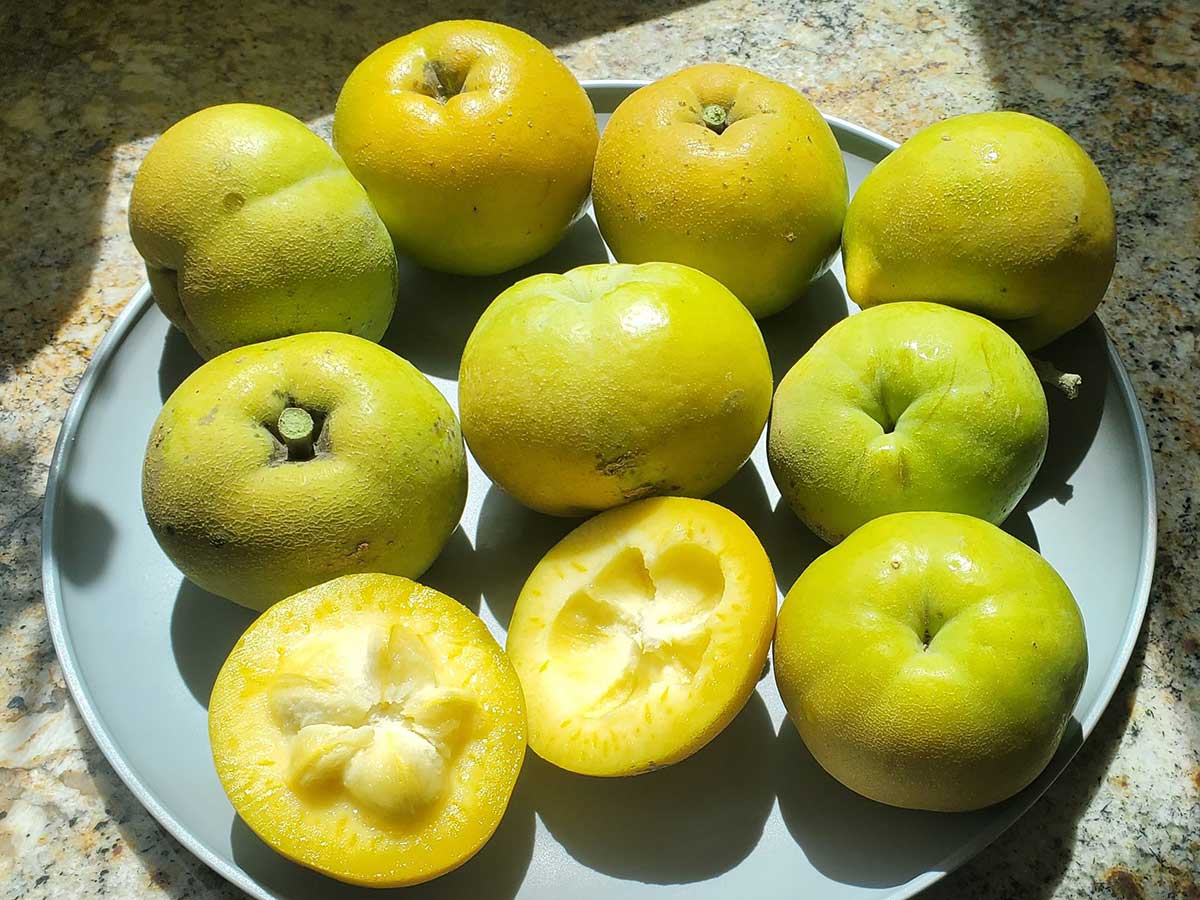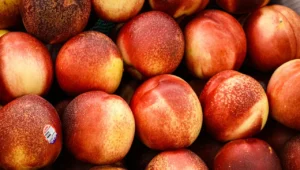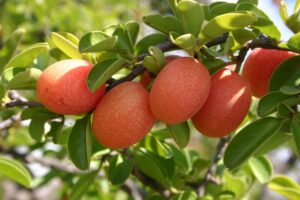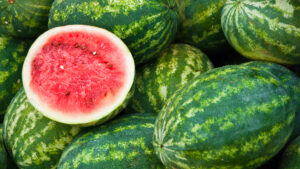How to Grow and Care for White Sapote: A Complete Guide
White sapote (Casimiroa edulis), also known as Mexican apple or casimiroa, is a fascinating subtropical fruit tree gaining popularity in the United States. If you’re interested in growing unique fruit trees that offer delicious harvests and beautiful landscaping, white sapote deserves your attention. This comprehensive guide will walk you through everything you need to know about growing and caring for white sapote trees in various settings.
What is White Sapote?
Native to central Mexico and parts of Central America, white sapote belongs to the Rutaceae family (the same as citrus). Unlike its distant cousin black sapote (which belongs to the persimmon family), white sapote produces custard-like, creamy fruit with flavors often described as resembling vanilla, banana, or peach. The tree features attractive evergreen foliage and can reach heights of 15-50 feet depending on growing conditions.
According to the USDA Agricultural Research Service, white sapote has been cultivated in the United States since the early 1800s, primarily in California and Florida, and continues to grow in popularity among home gardeners and specialty fruit enthusiasts (USDA ARS).
White Sapote Growing Zones and Climate Requirements
Before planting white sapote, it’s essential to understand its climate needs. White sapote thrives in:
- USDA hardiness zones 9-11
- Subtropical and mild temperate climates
- Areas with minimal frost (can tolerate brief exposure to temperatures as low as 22°F/-5°C when mature)
- Protection from hot, drying winds
Pro tip: If you live in a colder region (zones 7-8), you can still grow white sapote in containers that can be moved indoors during winter months.
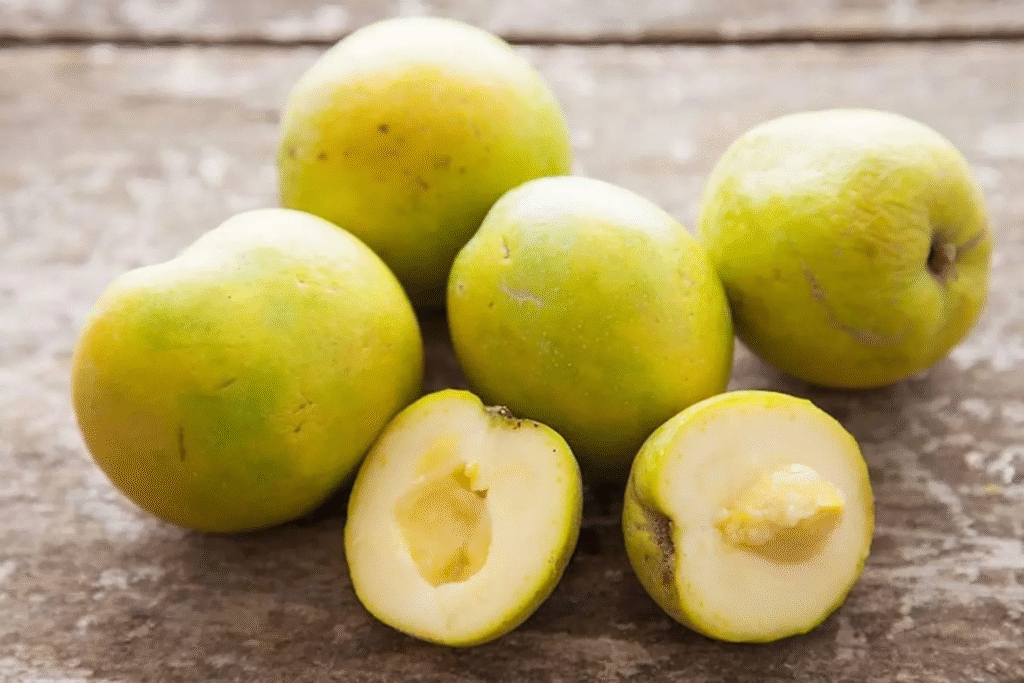
Growing White Sapote from Seed
While grafted trees produce fruit faster and guarantee the variety, growing white sapote from seed can be a rewarding experience:
- Obtain fresh seeds: Seeds lose viability quickly, so use only fresh seeds extracted from ripe fruit.
- Clean the seeds: Remove all pulp and rinse thoroughly.
- No drying necessary: Unlike many seeds, white sapote seeds should not be dried.
- Planting depth: Plant seeds about 1 inch deep in a well-draining potting mix.
- Germination environment: Maintain soil temperature around 70-75°F (21-24°C).
- Germination time: Expect germination within 2-6 weeks.
- Seedling care: Provide bright, indirect light until seedlings are established.
Important note: Trees grown from seed may take 5-8 years to bear fruit, and the quality and characteristics may differ from the parent tree. For consistent quality and earlier fruiting, grafted trees are recommended.
Planting White Sapote Trees Outdoors
When planting white sapote in your garden or landscape, timing and site selection are crucial:
Best Time to Plant
- Spring is ideal in most regions
- Fall planting works well in zones 10-11
- Avoid summer planting in hot regions to prevent heat stress
Site Selection
White sapote prefers:
- Full sun to light partial shade
- Protection from strong winds
- Well-draining soil (clay soils should be amended)
- pH range of 5.5-7.5
- At least 15-20 feet from buildings and other trees
Planting Process
- Dig a hole twice as wide as the root ball and equally deep
- Amend soil with compost if necessary to improve drainage
- Remove the tree carefully from its container
- Inspect roots and gently loosen any circling roots
- Place the tree in the hole with the graft union (if present) 2-4 inches above soil level
- Backfill with native soil, tamping gently to remove air pockets
- Create a watering basin around the tree
- Water thoroughly to settle the soil
- Apply mulch 3-4 inches deep, keeping it away from the trunk
Growing White Sapote in Containers
Container growing is an excellent option for limited spaces or colder climates:
Container Selection
- Choose a container at least 15-20 gallons for young trees
- Ensure adequate drainage holes
- Consider using fabric grow bags for better root health
- Select containers with light colors to prevent root overheating
Potting Mix
Create a well-draining mix using:
- 50% high-quality potting soil
- 25% perlite or pumice
- 25% compost or coconut coir
Container Care Tips
- Watering: Check soil moisture frequently as containers dry out faster than ground soil
- Fertilizing: Apply balanced, slow-release fertilizer quarterly at half the recommended rate for in-ground trees
- Root pruning: Every 2-3 years, remove the tree, trim outer roots, and repot with fresh soil
- Winter protection: Move containers to protected areas when temperatures drop below 28°F (-2°C)
White Sapote Varieties for the US Market
Here are some of the most successful white sapote varieties for US cultivation:
| Variety | Fruit Size | Flavor Profile | Cold Hardiness | Ripening Season | Special Characteristics |
|---|---|---|---|---|---|
| Pike | Medium-Large | Sweet, vanilla-custard | Good | Fall-Winter | Reliable producer, compact growth |
| Suebelle | Medium | Sweet, hints of peach | Moderate | Spring | Few seeds, productive |
| Lemon Gold | Medium | Sweet with citrus notes | Very Good | Fall | Yellow flesh, disease resistant |
| Max Golden | Large | Rich custard, banana notes | Moderate | Winter-Spring | Prolific bearer |
| McDill | Medium | Complex flavor, pear-vanilla | Good | Summer-Fall | Consistent production |
| Dade | Medium | Sweet, less pronounced | Excellent | Fall | Florida-adapted variety |
Note: Availability may vary by nursery. Check with specialty fruit nurseries that focus on subtropical varieties.
Watering and Irrigation Requirements
Proper irrigation is crucial for white sapote establishment and production:
Watering Schedule
Newly planted trees (first year):
- Water deeply twice weekly during growing season
- Once weekly during cooler months
- Adjust based on rainfall
Established trees (2+ years):
- Water deeply when top 2-3 inches of soil dries out
- Typically every 7-10 days during growing season
- Reduce in winter to once every 2-3 weeks
Signs of Water Issues
Underwatering:
- Leaf curling or wilting
- Premature leaf drop
- Fruit drop
- Stunted growth
Overwatering:
- Yellowing leaves
- Fungal issues near trunk
- Slow growth
- Root rot symptoms
Fertilization and Nutrition
White sapote has moderate fertilizer requirements:
Fertilizer Schedule
Year 1:
- Use balanced, slow-release fertilizer (e.g., 8-8-8)
- Apply lightly every 2 months during growing season
- Avoid fertilizing in late fall or winter
Years 2-3:
- Use fruit tree fertilizer with slightly higher phosphorus
- Apply quarterly at manufacturer’s recommended rate
Mature trees (4+ years):
- Apply balanced fertilizer 3 times yearly (late winter, late spring, mid-summer)
- Consider supplementing with micronutrients if soil is deficient
Common Nutrient Deficiencies
- Iron: Yellowing leaves with green veins (chlorosis)
- Zinc: Small leaves, shortened internodes
- Magnesium: Yellowing between leaf veins with green margins
For organic gardens, compost, worm castings, and fish emulsion provide excellent nutrition.
Pruning and Training
White sapote requires minimal pruning but benefits from some structural training:
When to Prune
- Major pruning: Late winter to early spring before new growth
- Light pruning: Any time during growing season
Pruning Objectives
- Training young trees:
- Establish a central leader or modified central leader system
- Select 3-5 well-spaced scaffold branches
- Maintenance pruning:
- Remove dead, diseased, or crossing branches
- Thin interior to improve air circulation
- Control height if desired (although this reduces yield)
- Rejuvenation:
- Older trees can be heavily pruned to encourage new growth
- Best done over 2-3 seasons
Pruning tip: White sapote can be sensitive to sunburn after heavy pruning. Consider whitewashing exposed branches or pruning gradually.
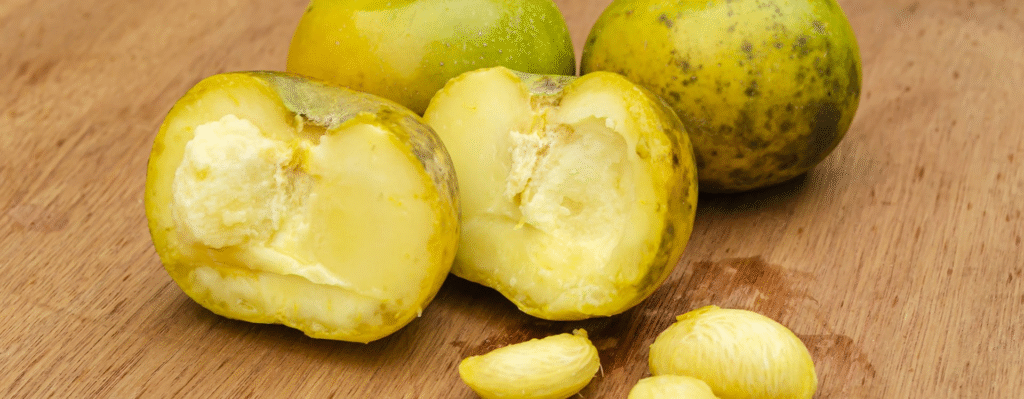
Pest and Disease Management
White sapote is relatively pest and disease resistant compared to many fruit trees, but it’s not immune to problems.
Common Pests
- Fruit flies
- Prevention: Bag fruit, use traps
- Treatment: Organic bait sprays, proper orchard sanitation
- Scale insects
- Prevention: Maintain healthy trees, encourage beneficial insects
- Treatment: Horticultural oil, insecticidal soap
- Root knot nematodes
- Prevention: Plant in clean soil, use resistant rootstocks
- Management: Maintain optimal tree health, organic soil amendments
Common Diseases
- Root rot (Phytophthora)
- Prevention: Well-draining soil, avoid overwatering
- Treatment: Reduce irrigation, apply appropriate fungicides
- Anthracnose
- Prevention: Good air circulation, avoid overhead watering
- Treatment: Copper-based fungicides
According to the University of California Cooperative Extension, integrated pest management (IPM) approaches are most effective for white sapote cultivation, focusing on prevention and biological controls before resorting to pesticides (UC IPM Program).
Harvesting White Sapote
Knowing when and how to harvest maximizes fruit quality:
When to Harvest
- Fruit is mature when it changes from bright green to yellowish-green
- Slight softening at the blossom end indicates ripeness
- Gently twist fruit – it should detach easily when ripe
- Harvest before fully soft to prevent bruising
Harvesting Process
- Use clippers or scissors to cut fruit with a short stem attached
- Handle gently to prevent bruising
- Place in shallow containers, single layer if possible
- Allow to ripen fully at room temperature (takes 3-7 days)
Post-Harvest Handling
- Fully ripe sapotes are extremely delicate
- Refrigerate ripe fruit for up to 3 days
- For longer storage, puree and freeze the flesh
Enjoying White Sapote
White sapote is versatile in the kitchen:
Fresh Consumption
- Eat with a spoon directly from the skin (like avocado)
- Add to fruit salads
- Blend into smoothies
Culinary Applications
- Ice cream and frozen desserts
- Custards and puddings
- Baked goods (muffins, breads)
- Sauces for poultry or fish
Nutritional Benefits
White sapote is rich in:
- Vitamins A and C
- Potassium
- Fiber
- Antioxidants
Propagation Techniques
For those interested in propagating white sapote beyond seed growing:
Grafting
- Whip and tongue grafting is most successful
- T-budding works well in warm conditions
- Best timing: Spring when rootstock is actively growing
- Use semi-hardwood scions
- Shield grafting has highest success rate
Air Layering
- Select a healthy branch (pencil thickness)
- Remove a ring of bark
- Apply rooting hormone
- Wrap with moist sphagnum moss and plastic
- Roots form in 2-3 months
- Remove and plant when roots are well-developed
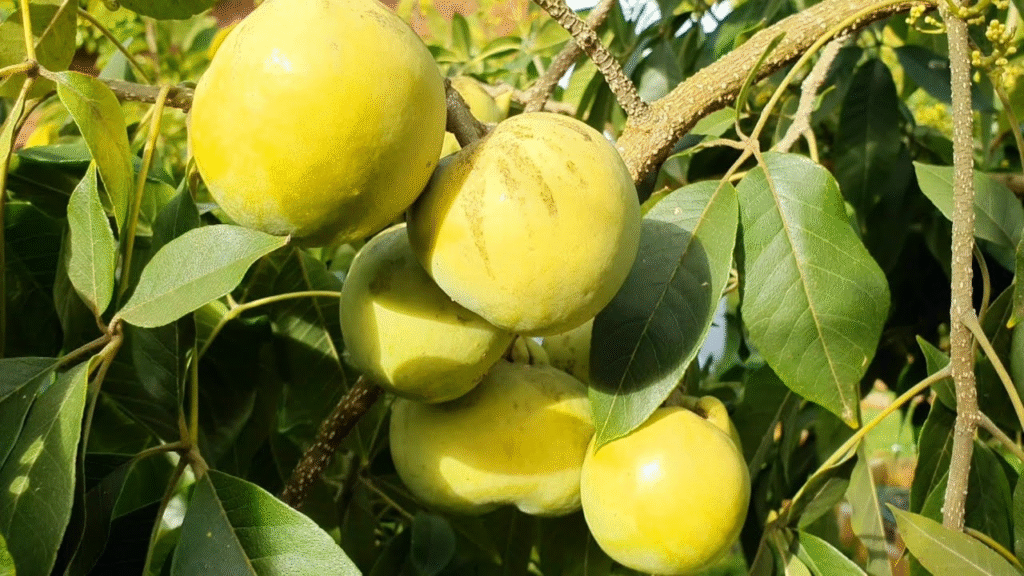
Common Challenges and Solutions
Even experienced gardeners face challenges with white sapote:
Fruit Drop
Causes:
- Water stress
- Nutrient deficiency
- Pollination issues
Solutions:
- Maintain consistent watering
- Ensure proper fertilization
- Plant multiple varieties for cross-pollination
Slow Growth
Causes:
- Cold temperatures
- Improper planting
- Root constraints
Solutions:
- Provide wind and cold protection
- Ensure proper planting depth
- Check for girdling roots
No Fruiting
Causes:
- Young tree age (common under 5 years)
- Improper pollination
- Over-fertilization with nitrogen
Solutions:
- Patience for young trees
- Hand pollination
- Balanced fertilization program
The US Market for White Sapote
The market for white sapote in the United States continues to develop:
- Primary production regions: Southern California, Florida, parts of Texas and Arizona
- Market channels: Farmers markets, specialty produce stores, direct-to-consumer
- Consumer interest: Growing with increased interest in exotic and subtropical fruits
- Commercial challenges: Short shelf life, limited consumer awareness
According to the USDA National Agricultural Library, white sapote represents an opportunity for diversification in subtropical agricultural regions facing climate change challenges (USDA NAL).
Conclusion
White sapote offers a unique opportunity for home gardeners and small-scale growers in suitable US climates. With proper care, these trees provide decades of beautiful foliage and delicious, nutritious fruits unlike anything commonly found in markets.
Whether you choose to grow from seed in containers or plant grafted varieties in your landscape, white sapote rewards your efforts with its unusual custard-like fruits. As climate zones shift and interest in unique edibles grows, this Mexican native is finding a welcome home in more US gardens.
By following the guidance in this article, you’ll be well-prepared to successfully grow and enjoy this delicious “ice cream fruit” for years to come.
